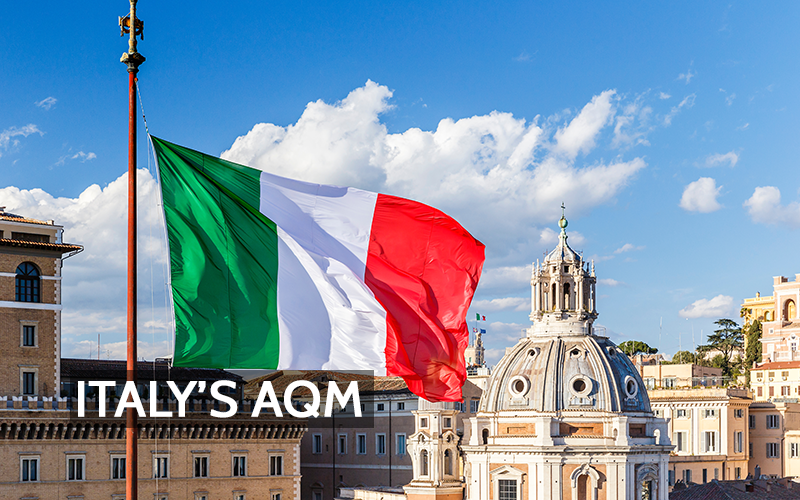Italy, known for its rich cultural heritage and picturesque landscapes, faces a multitude of air quality challenges. The combination of heavy industrial activity, vehicular emissions, and an influx of tourists in cities like Rome, Venice, and Florence has heightened concerns about air pollution. This article explores the regulatory framework governing air quality in Italy, examines private initiatives addressing pollution in tourist-heavy cities, and evaluates the future of air quality management in the country.
Government Regulations on Air Quality in Italy
Italy’s air quality regulations are shaped largely by European Union (EU) directives. As an EU member state, Italy adheres to a stringent set of air quality standards established under the EU Air Quality Framework Directive (2008/50/EC). This directive defines permissible levels for pollutants like particulate matter (PM10 and PM2.5), nitrogen dioxide (NO2), sulfur dioxide (SO2), and ozone (O3). The framework requires member states to monitor air pollution, report data, and implement action plans for areas exceeding pollution limits.
Italy formalized these EU standards through Legislative Decree No. 155/2010, which sets national air quality objectives and specifies monitoring methodologies. It mandates regional governments to establish Air Quality Plans (Piani di Qualità dell’Aria) to address local pollution hotspots. These plans often include restrictions on vehicular traffic, industrial emissions controls, and promotion of renewable energy.
In addition to national legislation, Italy has implemented Low Emission Zones (LEZs) in major cities. For example, Milan’s Area C and Rome’s ZTL (Zona a Traffico Limitato) restrict vehicle access in central areas to reduce emissions. These measures aim to balance economic activity with environmental sustainability.
The History of Air Quality Regulations in Italy
Italy’s focus on air quality began in the 1970s with laws addressing industrial emissions and urban smog. However, significant progress was achieved after Italy joined the EU in 1993. The adoption of EU directives forced Italy to modernize its environmental policies, including air quality monitoring.
The 2008 financial crisis prompted additional environmental reforms. Recognizing the link between air pollution and public health costs, Italy invested in modernizing monitoring infrastructure. By 2010, the country established an extensive network of over 600 monitoring stations nationwide, enabling more precise data collection and compliance reporting.
Despite these advances, enforcement has been uneven, with regions in northern Italy, such as the Po Valley, struggling to meet EU standards due to geographical and industrial factors. The European Commission has initiated infringement proceedings against Italy multiple times for failing to address persistent air quality violations.
Private Initiatives Tackling Pollution in Tourist-Laden Cities
In addition to governmental efforts, private organizations and grassroots movements have emerged to combat air pollution in Italy’s most visited cities. These initiatives often focus on innovative solutions tailored to the unique challenges posed by tourism.
- Green Mobility Projects: Cities like Venice and Florence have partnered with private firms to introduce electric water taxis, electric buses, and bike-sharing systems. These programs aim to reduce emissions from traditional transportation methods, which are significant contributors to urban air pollution.
- Air Quality Crowdsourcing: Platforms like AirVisual (hosted by IQAir) and Citizen Science initiatives encourage residents and tourists to participate in air quality monitoring. By using portable sensors and smartphone apps, individuals can collect localized air quality data, supplementing official government measurements.
- Urban Greening Initiatives: NGOs such as Legambiente have lead urban greening projects to improve air quality. In Rome, for instance, community-driven efforts have resulted in the planting of thousands of trees in high-traffic areas. These trees act as natural air purifiers, absorbing CO2 and particulate matter.
- Sustainable Tourism Campaigns: Tourist-heavy cities like Venice have implemented campaigns to raise awareness about sustainable tourism practices. These campaigns promote reduced reliance on cars, encourage walking tours, and discourage littering, which indirectly reduces air quality issues.
The Future of Air Quality Regulation in Italy
Looking ahead, Italy’s air quality management faces both opportunities and challenges. The EU’s Green Deal and the Fit for 55 initiative set ambitious goals for reducing emissions by 55% by 2030 compared to 1990 levels. Italy’s compliance with these goals will require significant investments in renewable energy, sustainable urban planning, and stricter enforcement of existing regulations.
Technological Innovations: Advances in air quality monitoring technology, such as satellite-based systems and AI-driven analytics, are expected to enhance Italy’s capacity to identify and address pollution hotspots. For example, the Copernicus Sentinel-5P satellite has already provided valuable data on NO2 and ozone levels in Italy.
Regional Collaboration: Northern Italy’s Po Valley region, which suffers from severe smog due to industrial activity and geographic constraints, will benefit from cross-border collaboration with neighboring countries like Switzerland and Austria. Shared action plans could address transboundary pollution more effectively.
Public Awareness: Education campaigns targeting residents and tourists will remain crucial. Greater public understanding of air pollution’s health impacts can drive behavioral changes, such as reduced car usage and increased adoption of clean energy solutions.
Challenges: Despite these promising developments, Italy faces hurdles such as bureaucratic inefficiency, regional disparities, and economic constraints. Addressing these issues will require stronger political will and more cohesive national strategies.
Air quality monitoring and management in Italy have come a long way, driven by EU regulations, technological advancements, and innovative private initiatives. While challenges remain, the country is well-positioned to make significant strides in combating air pollution. As Italy moves toward a greener future, the collaboration between government, private organizations, and citizens will be essential to achieving sustainable air quality improvements.
Related Article:
Air Quality Management in Australia: Legislative Frameworks and Future Directions
References:
- https://eur-lex.europa.eu/legal-content/EN/TXT/?uri=CELEX%3A32008L0050
- https://www.mase.gov.it/
- https://www.comune.milano.it/en/aree-tematiche/mobilita/area-c
- https://commission.europa.eu/index_en
- https://www.iqair.com/it/italy/lombardy/milano
- https://commission.europa.eu/strategy-and-policy/priorities-2019-2024/european-green-deal_en
- https://www.legambiente.it/english-page/


